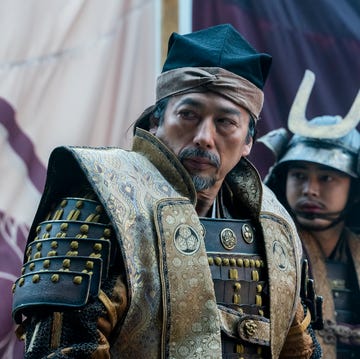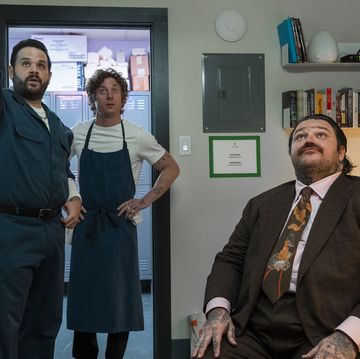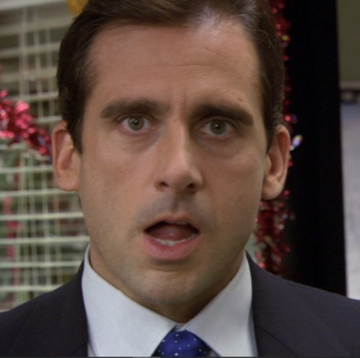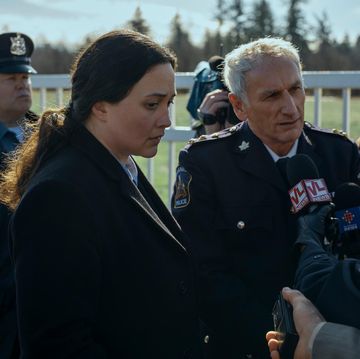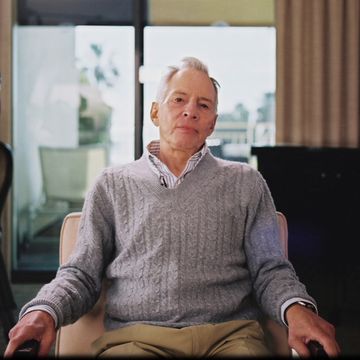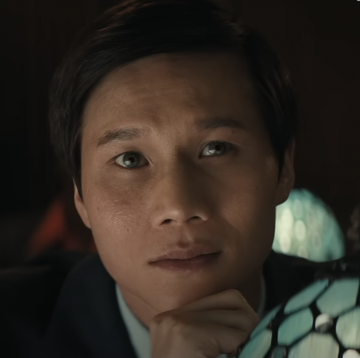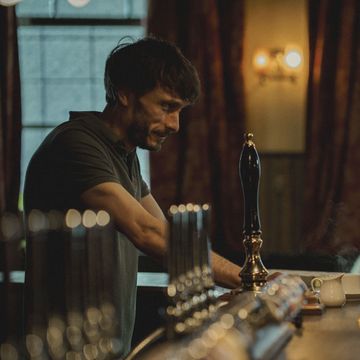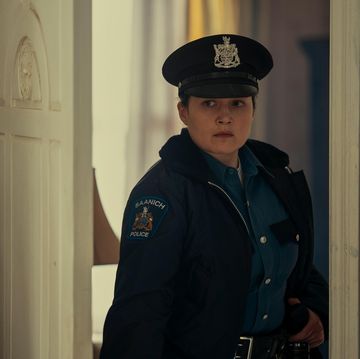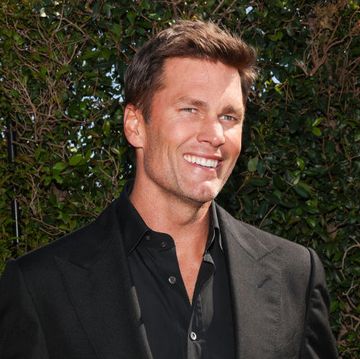Last July, Lana Del Rey confirmed the rumors that she had placed a hex on President Trump. Why? Because “Why not?”
“I really do believe that words are one of the last forms of magic, and I’m a bit of a mystic at heart,” the singer said at the time. “And I’ve seen how I feel about changing those people’s lives and I’ve been on the other side of that as well—on the other side of well-wishes and on the other side of malintent.”
Of course, it didn’t help that in addition to the endless political misery marathon, Lana Del Rey was capitalizing on a surge of witchcraft—and a witchcraft revival—in popular culture. Over the last two years, the entertainment world has graced us with movies like The Love Witch, The Witch, Hereditary, and Suspiria, plus TV shows like The Chilling Adventures of Sabrina and a reboot of the ‘90s classic Charmed (not that everything witch-centric needs to be amazing). And series like The Haunting of Hill House and American Horror Story: Apocalypse have used the occult and supernatural to comment on everything from the consequences of privilege to the lasting effects of trauma. And that makes sense, especially when you remember how we’ve previously embraced the occult: We tend to reclaim power through culture when we’re feeling politically powerless, and nothing offers us the illusion of power like watching fictional characters wield theirs.
A ’90s cult classic, The Craft was released five months before Bill Clinton defeated Bob Dole in the 1996 election. Revolving around four high school students who form a coven, it tells the cautious tale of what can happen when you ostracize outliers and use one’s social hierarchy or patriarchal leanings to abuse power—at least on its surface. With four women at its core, The Craft seems like a compelling story of how easy it is to conquer the world when you embrace friendship.
But in reality, the movie re-affirms the values it’s supposed to be rallying against. Nancy (Fairuza Balk) seizes the group’s power for herself, and positions two of its members against the “good”—and chaste—Sarah (Robin Tunney). Then, using her own gifts, Sarah drives Nancy into a mental health crisis where she’s locked away as the rest of the coven disbands. Arguably, it’s a film disguised as feminist rhetoric that rallies against those very teachings. Because I mean, sure: It’s a story about women, but the supernatural force they tap into is male (the aptly named Manon). Plus, it sends the very clear message that while strong as a whole, each woman is better off existing alone.
Which was sadly the climate we ended up venturing into during the Clinton administration. By 1998 (and early 1999), Clinton’s own abuse of power was exhibited and dissected in the aftermath of his affair with Monica Lewinsky. And as other women stepped forward to accuse him of sexual misconduct, they went on to be dragged by the public and the media—which sent the clear message that silence is safest, that patriarchal norms continue to stand, and ladies: You’re on your own.
Which is why the era’s pop-culture offerings were so important, particularly as a form of commentary. While Sabrina the Teenage Witch premiered in September 1996 and Buffy the Vampire Slayer debuted in March 1997, their popularity only increased over the next few years, especially amongst young women. The film Practical Magic and the original Charmed both premiered in October 1998, and each used elements of witchcraft and the occult to demonstrate what can happen when women tap into their own abilities—as well as how they women can achieve even more when working together.
In all of the aforementioned pop culture items, we see heroes that are born with gifts, only to struggle with how to use them. Power, after all, can be frightening (and to quote the late Stan Lee, it also requires great responsibility). But once these protagonists band together alongside their mentors, friends, and even family, each take control of their narratives and defeat any/all threats as a result. (You know, in the same way we can go on to rise up and exercise our own rights—which is often stronger as a collective unit than individual ones.)
In fact, almost all surges of witch-centric programming seem like they culturally call out their respective social and political realities. In 1964, Bewitched premiered and saw Samantha try to abide by the gender norms reaffirmed over most of the century—which gets increasingly difficult thanks to her obvious eccentricities and straight-up refusal to appease her husband. In the midst of the Reagan years, the women of the 1987 feature The Witches of Eastwick are lured by the charm and promises of Jack Nicholson’s Daryl Van Horne, only to realize he’s not who he’s presented himself as and certainly doesn’t have their best interests at heart (just as Reagan prioritized rich, white, straight people and certainly didn’t champion reproductive rights.)
And then there’s Harry Potter. While J.K. Rowling is now a Johnny Depp apologist, her books of the boy wizard and his witch friends (published between 1997 to 2007) once served as a sort of anti-fascist rhetoric, particularly as the series builds to their rebellion against Voldemort, whom they eventually defeat. And in 2007, at the tail-end of George W. Bush’s staunch Republican presidency, this message was especially valuable and even offered parallels to the war in Iraq. Rowling’s themes are so valuable that they re-ignited at the start of the Trump administration; plot points from the series seemed to pop up in the president’s anti-woman, anti-immigrant, and anti-LGBTQ agenda that even the biggest Potter fans (hello!) begged them to stop.
Which isn’t to say all stories of witches or Satan do justice to their origins or even successfully comment on current affairs. After all, The Blair Witch Project (1999) delivers a villain who is never actually seen. Instead, we’re meant to rely only on footage with no real context to gauge her threat. (Which, if aligning the film with the Clinton years, is a dangerous revelation: A faceless woman, whose existence isn’t even proven to be true, serves as the downfall of the movie’s protagonists.) And 2013’s American Horror Story: Coven hinges less on the era’s political norms and serves more as a commentary on the competitive nature of women. Which, in all fairness, certainly exists. But it certainly didn’t exist more during the Obama years.
While the real-life political process is long, grueling and impossible-feeling, the promise of witchcraft offers instant gratification. It’s the glamorous answer to taking power into one’s hands and working alongside like minds to heed bankable results outside of protests or voting. And access to that alternative reality can be an important escape, especially since, depending on your own beliefs, you can find truth in them—or at least enough substance that you can keep yourself going. After all, what’s the harm in hexing? Why not form a coven? Why shouldn’t we entertain signing the Book of the Beast in order to bask in immortality? At the very least, you may find yourself among like minds who might help keep you afloat. At the most, you might stumble upon an alternative reality defined by demons and goats.
Or at least that’s how we’ll look back upon 2018 when charting the evolution of the occult in our go-to movies and TV shows. Which sounds about right. Provided you remember that even in the midst of so-called witch hunts, the real sort will always emerge to remind you to vote.







